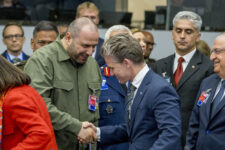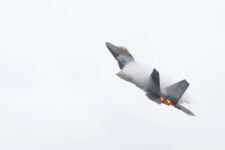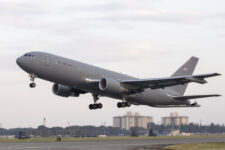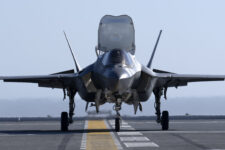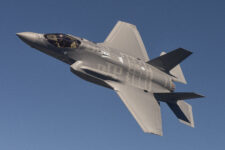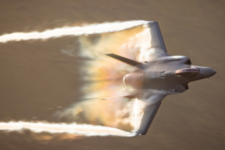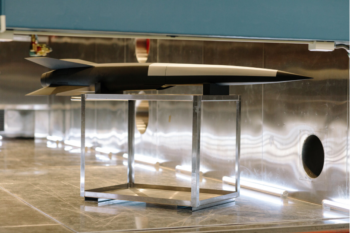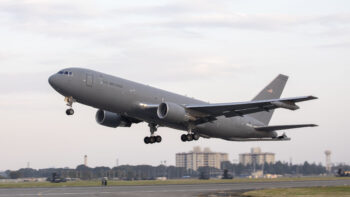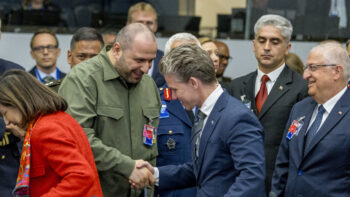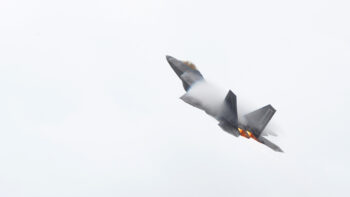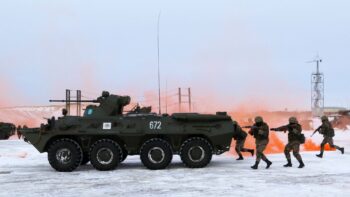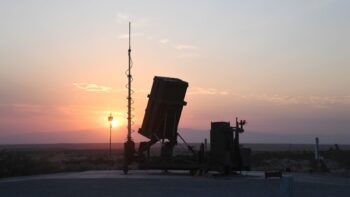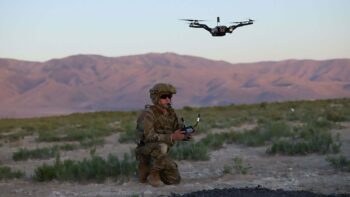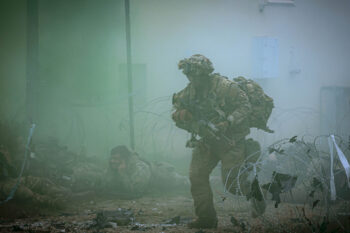
Secretary of Defense Lloyd Austin visited India in March. (DoD photo by Lisa Ferdinando)
WASHINGTON: The Air Forces of the US and India have signed a new agreement to cooperate on the development of unmanned aerial vehicles, according to the Pentagon.
The goal, per a Sept. 3 announcement: “the Design, Development, Demonstration, Test and Evaluation of technologies including physical hardware such as small UAVs, avionics, payload power, propulsion, and launch systems through prototyping that meet the operational requirements of the Indian and U.S. Air Forces.”
The over $22 million price tag for the effort will be split 50/50, in what the Pentagon bills as the “largest-ever” RDT&E effort between the militaries.
“The United States and India share a common vision of a free and open Indo-Pacific,” Kelli Seybolt, deputy undersecretary of the Air Force for international affairs, said in the announcement. “This co-development agreement further operationalizes India’s status as a Major Defense Partner and builds upon our existing strong defense cooperation.”
The effort falls under the aegis of the US-India Defense Technology and Trade Initiative, or DDTI. That effort dates back to 2012, and was a pet project of then-Deputy Secretary of Defense Ash Carter. When Carter became secretary in 2015, he reinvigorated the effort; Ellen Lord, who ran Pentagon acquisition for the majority of the Trump administration, was also a major supporter of closer development ties with India.
In fact, Lord pushed in 2019 an initiative to co-develop a small unmanned system that could be launched from cargo aircraft. While nothing appears to have come directly out of that, it’s hard not to see linkages between the 2019 plan and what was announced last week.
While widely popular among experts as a concept, there isn’t much to show from several attempts at collaborations, noted Chris Bassler of the Center for Strategic and Budgetary Assessments. But he sees reasons for cautious optimism this time.
“The DTTI has struggled to maintain momentum in recent years, but this new project may signal a renewed mutual interest in substantial progress for capability benefits,” said Bassler, who previously led international military technology and capabilities cooperation both at the Office of Naval Research and in the Office of the Chief of Naval Operations (OPNAV). “The combination of exercising design tools, technology development, production potential in the Indo-Pacific theater, and employment against mutual threats mean this cooperative project has much more strategic significance than perhaps will be easily recognized.”
Bassler specifically would like to see the program focus on a version of the Air Force’s Skyborg program, as India has been investing in a similar concept.
“Skyborg has been demonstrating payloads deployed from UAVs, along with DARPA’s LongShot program, [which] are all examples of unmanned systems employing unmanned systems and increasing standoff ranges,” he said. “These types of capabilities are emblematic of positive efforts to shift the cost imposition ratio for future air combat against numerically advantaged air forces.”
India’s procurement cycle is famously slow and often changes mid-stream — the biggest example of this being its fighter contest, which featured years of delays and restarts after it had made its selection of the Dassault Rafale in 2012 — and its own internal technology development efforts have often floundered.
Still, defense companies have shown a willingness to put up with the chaos, and with good reason: India was the second largest importer of defense goods in 2020, according to SIPRI research, at around 9.5 percent of all global weapon buys.
Boeing inks contracts worth more than $4B for KC-46s, P-8s
The deals include seven new P-8s and 15 KC-46s.
